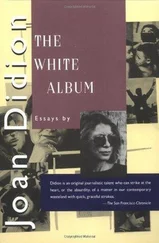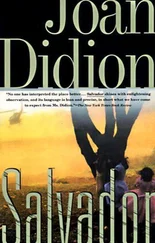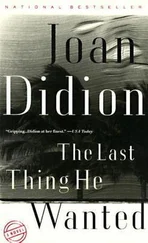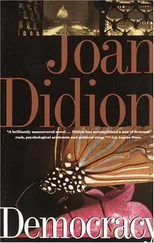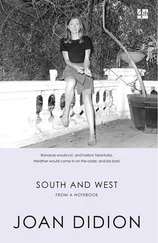There was to be, and this was key not only to the project but to the nature of the community which eventually evolved, a regional shopping center, “Lakewood Center,” which in turn was conceived as America’s largest retail complex: 256 acres, parking for ten thousand cars, anchored by a May Company. “Lou Boyar pointed out that they would build a shopping center and around that a city, that he would make a city for us and millions for himself,” John Todd, a resident of Lakewood since its beginning and later its city attorney, wrote of the planning stage. “Everything about this entire project was perfect,” Mark Taper said in 1969, when he sat down with city officials to work up a local history. “Things happened that may never happen again.”
What he meant, of course, was the perfect synergy of time and place, the seamless confluence of World War Two and the Korean War and the G.I. Bill and the defense contracts that began to flood Southern California as the Cold War set in. Here on this raw acreage on the flood plain between the Los Angeles and San Gabriel Rivers was where two powerfully conceived national interests, that of keeping the economic engine running and that of creating an enlarged middle or consumer class, could be seen to converge.
The scene beneath the hundred-foot pylon during that spring of 1950 was Cimarron: thirty thousand people showed up for the first day of selling. Twenty thousand showed up on weekends throughout the spring. Near the sales office was a nursery where children could be left while parents toured the seven completed and furnished model houses. Thirty-six salesmen worked day and evening shifts, showing potential buyers how their G.I. benefits, no down payment, and thirty years of monthly payments ranging from $43 to $54 could elevate them to ownership of a piece of the future. Deals were closed on 611 houses the first week. One week saw construction started on 567. A new foundation was excavated every fifteen minutes. Cement trucks were lined up for a mile, waiting to move down the new blocks pouring foundations. Shingles were fed to roofers by conveyer belt. And, at the very point when sales had begun to slow, as Taper recalled at the 1969 meeting with city officials, “the Korean War was like a new stimulation.”
“There was this new city growing — growing like leaves,” one of the original residents, who with her husband had opened a delicatessen in Lakewood Center, said when she was interviewed for an oral history project undertaken by the city and Lakewood High School. “So we decided this is where we should start…. There were young people, young children, schools, a young government that was just starting out. We felt all the big stores were coming in. May Company and all the other places started opening. So we rented one of the stores and we were in business.” These World War Two and Korean War veterans and their wives who started out in Lakewood were, typically, about thirty years old. They were, typically, not from California but from the Midwest and the border South. They were, typically, blue-collar and lower-level white collar. They had 1.7 children, they had steady jobs. Their experience tended to reinforce the conviction that social and economic mobility worked exclusively upward.
Donald J. Waldie, while he was working as the City of Lakewood’s public information officer, wrote an extraordinary book, Holy Land: A Suburban Memoir , published in 1996, a series of interconnected essays about someone who, like their author, lived in Lakewood and worked at City Hall. “Naively, you could say that Lakewood was the American dream made affordable for a generation of industrial workers who in the preceding generation could never aspire to that kind of ownership,” he said one morning when we were talking about the way the place was developed. “They were fairly but not entirely homogenous in their ethnic background. They were oriented to aerospace. They worked for Hughes, they worked for Douglas, they worked at the naval station and shipyard in Long Beach. They worked, in other words, at all the places that exemplified the bright future that California was supposed to be.”
Donald Waldie grew up in Lakewood, and, after Cal State Long Beach and graduate work at the University of California at Irvine, had chosen to come back, as had a striking number of people who lived there. In a county increasingly populated by low-income Mexican and Central American and Asian immigrants and pressed by the continuing needs of its low-income blacks, almost sixty thousand of Lakewood’s seventy-some thousand citizens were still, in the spring of 1993, white. More than half had been born in California, and most of the rest in the Midwest and the South. The largest number of those employed worked, just as their fathers and grandfathers had, for Douglas or Hughes or Rockwell or the Long Beach naval station and shipyard or for the many subcontractors and vendors that did business with Douglas and Hughes and Rockwell and the Long Beach naval station and shipyard.
People who lived in Lakewood did not necessarily think of themselves as living in Los Angeles, and could often list the occasions on which they had visited there, to see the Dodgers play, say, or to show a relative from out of state the Music Center. Their apprehension of urban woes remained remote: the number of homeless people in Lakewood either in shelters or “visible on street,” according to the 199 °Census, was zero. When residents of Lakewood spoke about the rioting that had begun in Los Angeles after the 1992 Rodney King verdicts, they were talking about events that seemed to them, despite the significant incidence of arson and looting in such neighboring communities as Long Beach and Compton, to have occurred somewhere else. “We’re far away from that element,” one woman to whom I spoke said when the subject of the riots came up. “If you’ve driven around …”
“Little suburbia,” a neighbor said.
“America U.S.A., right here.”
The neighbor’s husband worked at a nearby Rockwell plant, not the Rockwell plant in Lakewood. The Rockwell plant in Lakewood had closed in 1992, a thousand jobs gone. The scheduled closing of the Long Beach naval station would mean almost nine thousand jobs gone. The Federal Base Closure and Realignment Commission had granted a provisional stay to the Long Beach naval shipyard, which adjoined the naval station and employed another four thousand people, but its prospects for survival remained dim. One thing that was not remote in Lakewood in 1993, one thing so close that not many people even wanted to talk about it, was the apprehension that what had already happened to the Rockwell plant and would happen to the Long Beach naval station and shipyard could also happen to the Douglas plant. I recall talking one day to Carl Cohn, then superintendent of the Long Beach Unified School District, which included Lakewood. “There’s a tremendous fear that at some point this operation might go away entirely,” he said. “I mean that’s kind of one of the whispered things around town. Nobody wants it out there.”
Douglas had already, in 1993, moved part of its MD-80 production to Salt Lake City. Douglas had already moved part of what remained of its C-17 production to St. Louis. Douglas had already moved the T-45 to St. Louis. In a 1992 study called Impact of Defense Cuts on California , the California Commission on State Finance had estimated nineteen thousand layoffs still to come from Hughes and McDonnell Douglas, but by 1992 there had already been, in Southern California, some twenty-one thousand McDonnell Douglas layoffs. According to a June 1993 report on aerospace unemployment prepared by researchers at the UCLA School of Architecture and Urban Planning, half the California aerospace workers laid off in 1989 were, two years later, either still unemployed or no longer living in California. Most of those who did find jobs had ended up in lower-income service jobs; only seventeen percent had gone back to work in the aerospace industry at figures approaching their original salaries. Of those laid off in 1991 and 1992, only sixteen percent, a year later, had found jobs of any kind.
Читать дальше
Конец ознакомительного отрывка
Купить книгу



